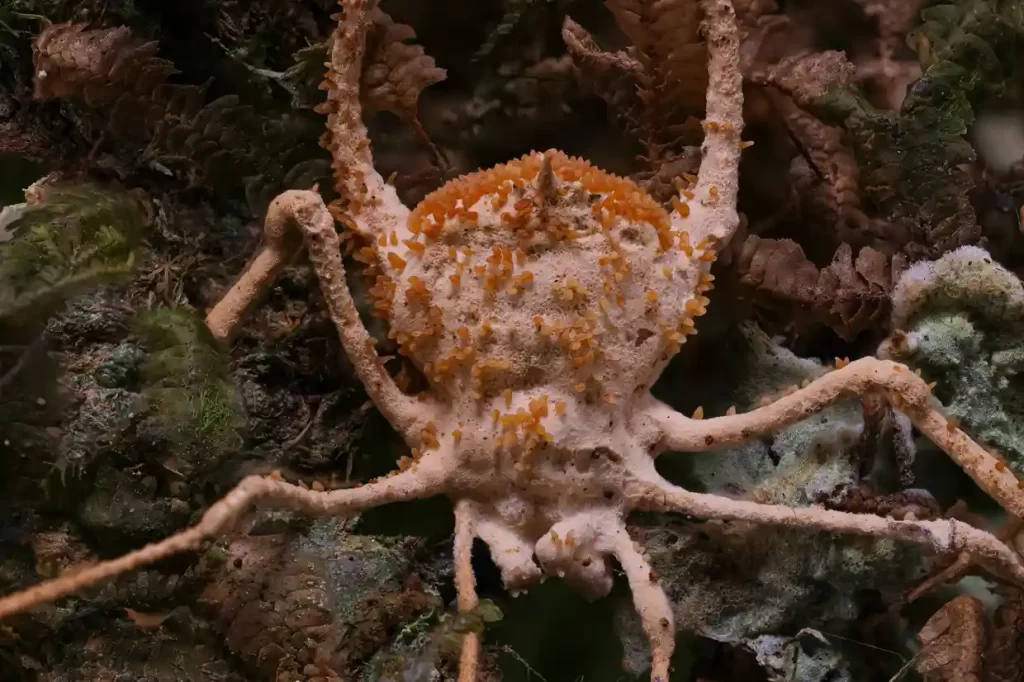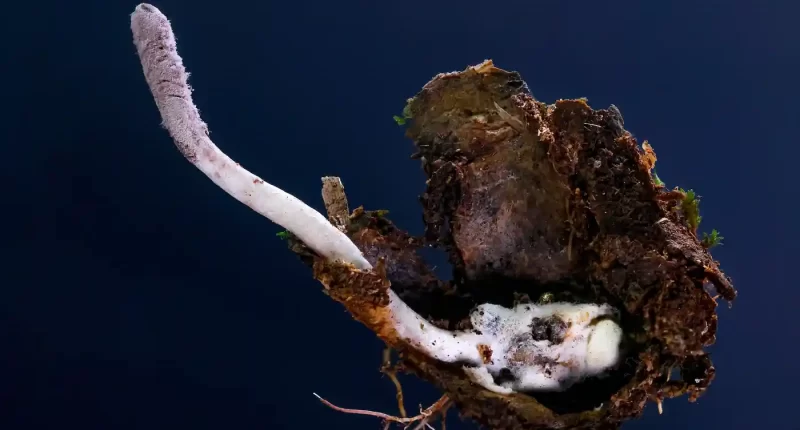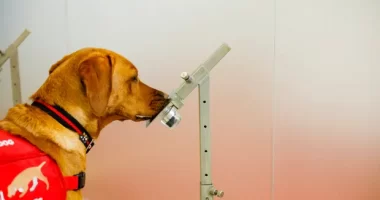It is believed by scientists that a previously unknown parasitic fungus has been found in Brazil’s Atlantic rainforest, which targets trapdoor spiders.
The uncommon purple organism is classified among a cluster of fungi that infect invertebrates and dominate the host. A detailed picture depicts the fungus enwrapped around the trapdoor spider’s body as it protrudes out of its burrow, where the arachnid captures insects.
The researchers stated that there is no indication that the recently discovered parasitic fungus manipulates the actions of trapdoor spiders prior to their demise, similar to their zombie-ant fungal counterparts. These fungi overpower the insects and deceive them into abandoning their homes and spreading their spores, as portrayed in the post-apocalyptic TV series and game, The Last of Us.
In November, while exploring the forests north of Rio de Janeiro to document the region’s biodiversity and search for undiscovered species, the fungus was discovered. However, before it is officially recognized as a new species, it must undergo a formal scientific description process.
Dr. João Araújo, a Brazilian mycologist with the New York Botanical Garden, who discovered the fungus, expressed admiration, calling it “It’s a really beautiful thing” Despite being undecided on a name, he mentioned that the fungus has the distinctive trait of infecting trapdoor spiders and is among the scarce cordyceps species that have a striking purple color, making it a remarkable discovery.
“We don’t know much about this fungal group because it’s very understudied. This kind of fungus has been collected very few times in the world, mostly in Thailand. This will likely be the first time we sequence a species like this from Brazil.”
Said Dr. João Araújo
The Atlantic rainforest, which was once spread over 15% of Brazil, is presently considered one of the most vulnerable ecosystems globally. Unfortunately, it has now been significantly fragmented, with just 20% of the original forest remaining. Despite this, the region is recognized as a biodiversity hotspot and is home to many species, including the golden lion tamarin monkey and the painted tree rat, that are exclusive to this area and found nowhere else on the planet.
A team of experts in plants, fungi, frogs, snakes, and birds, from various organizations including the Royal Botanic Gardens, Kew, the New York Botanical Garden, and the Rio de Janeiro Botanical Garden, among others, embarked on an expedition to the rainforest to observe and document its remaining biodiversity. Utilizing state-of-the-art portable technology, the scientists sequenced the fungus’s genome on-site during the expedition.

The scientists speculate that they may have come across additional fungal parasites during their excursion, but they require further investigation to confirm. These discoveries involve a fungus that parasitizes harvestman spiders and another that targets dung beetles.
“The new species that attacks trapdoor spiders belongs to a mega-diverse group of fungi,”
“We know about 1% of its diversity, so we know very little. Foundational scientific work is needed so we can, perhaps, investigate new medical compounds or use them to protect against pests in crops.”
Said Dr. João Araújo
According to Dr. Oscar Alejandro Pérez Escobar, the lead researcher, and Dr. Natalia Przelomska, who performed sequencing in the field, their findings support the idea of a new species and could expedite the process of identifying other species in endangered ecosystems.
“Here at Kew, we have access to big DNA sequencing machines and all sorts of ways to produce data. That is often so much harder in biodiverse countries.”
“So what was really special about the field trip was that we could go and use some of the newest DNA sequencing technologies with the people working there. It’s one small step in this really big problem of unequal access.”
Said Przelomska






